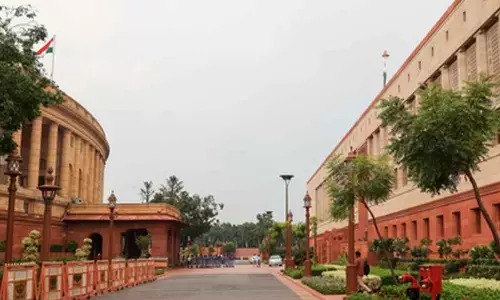A combined effort

To mark International Womens Day, a street art project created by a collaboration of European artist NeSpoon with 25 local women from InshaeNoor womens livelihoods initiative was unveiled in New Delhi on Friday
To mark International Women's Day, a street art project created by a collaboration of European artist NeSpoon with 25 local women from Insha-e-Noor women's livelihoods initiative was unveiled in New Delhi on Friday.
The project inaugurated by a delegation of the European Union along with the St+art India Foundation represented a cross-cultural exchange between Europe and India while celebrating women's traditions.
European Union's Ambassador to India, Tomasz Kozlowski, said the project marks the EU's commitment to women's empowerment and gender equality "which are cornerstones for inclusive and sustainable development and at the heart of EU policies across sectors".
"What this street art project demonstrates is that gender equality and empowerment of women are universal. Whether in Europe or in India, whether through ancient techniques and crafts or through contemporary means, women express a strong message of equality and empowerment that we all must listen and act upon to break gender stereotypes," he said.
NeSpoon, a street artist known for her practice based on embroidery and lace, said working with the women of the Insha-e-Noor group of the Aga Khan Trust for Culture and exchanging ideas with them on traditional Indian and European embroidery and crochet had been an enriching experience for her.
The mural unveiled on Friday celebrates European and Indian women's crafts, which have surprisingly similar patterns, and gives it a contemporary urban dimension through street art, bringing it into a public space to be celebrated and shared.
For this work, NeSpoon derived inspiration from the white lace traditions of Europe as well as Indian patterns she learned at a workshop with the women of Insha-e-Noor and adapted it by integrating shapes inspired by Indian "rangoli" and local colours, to produce a work of art that is both European and Indian.














